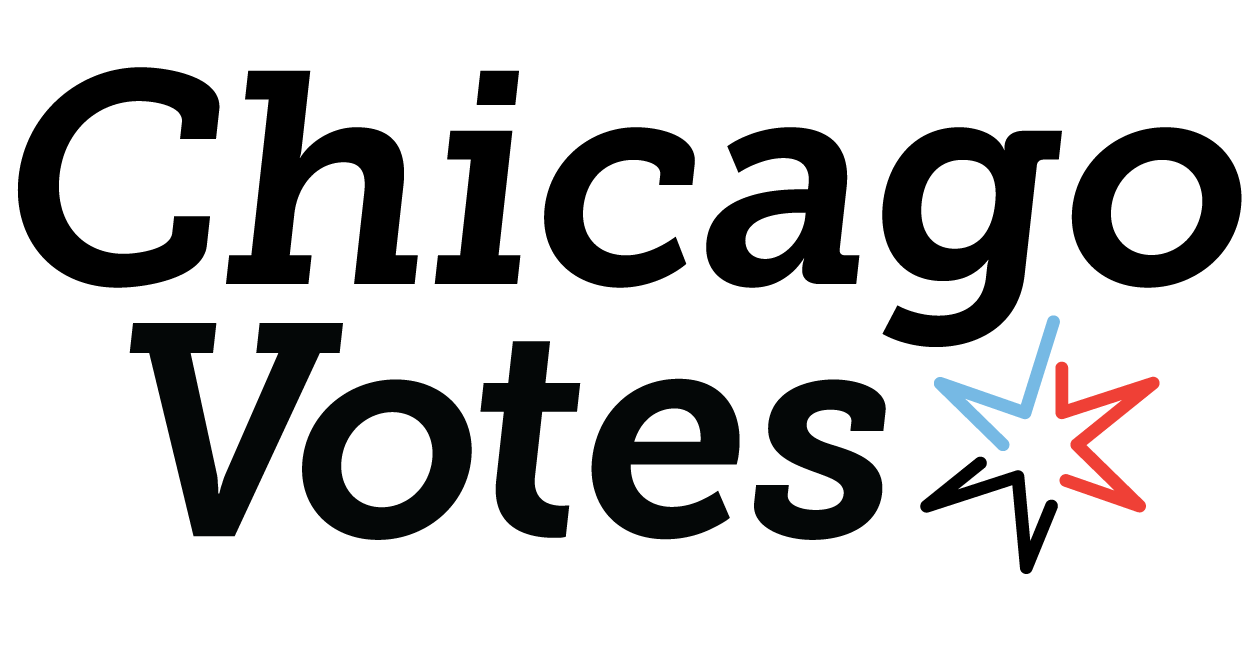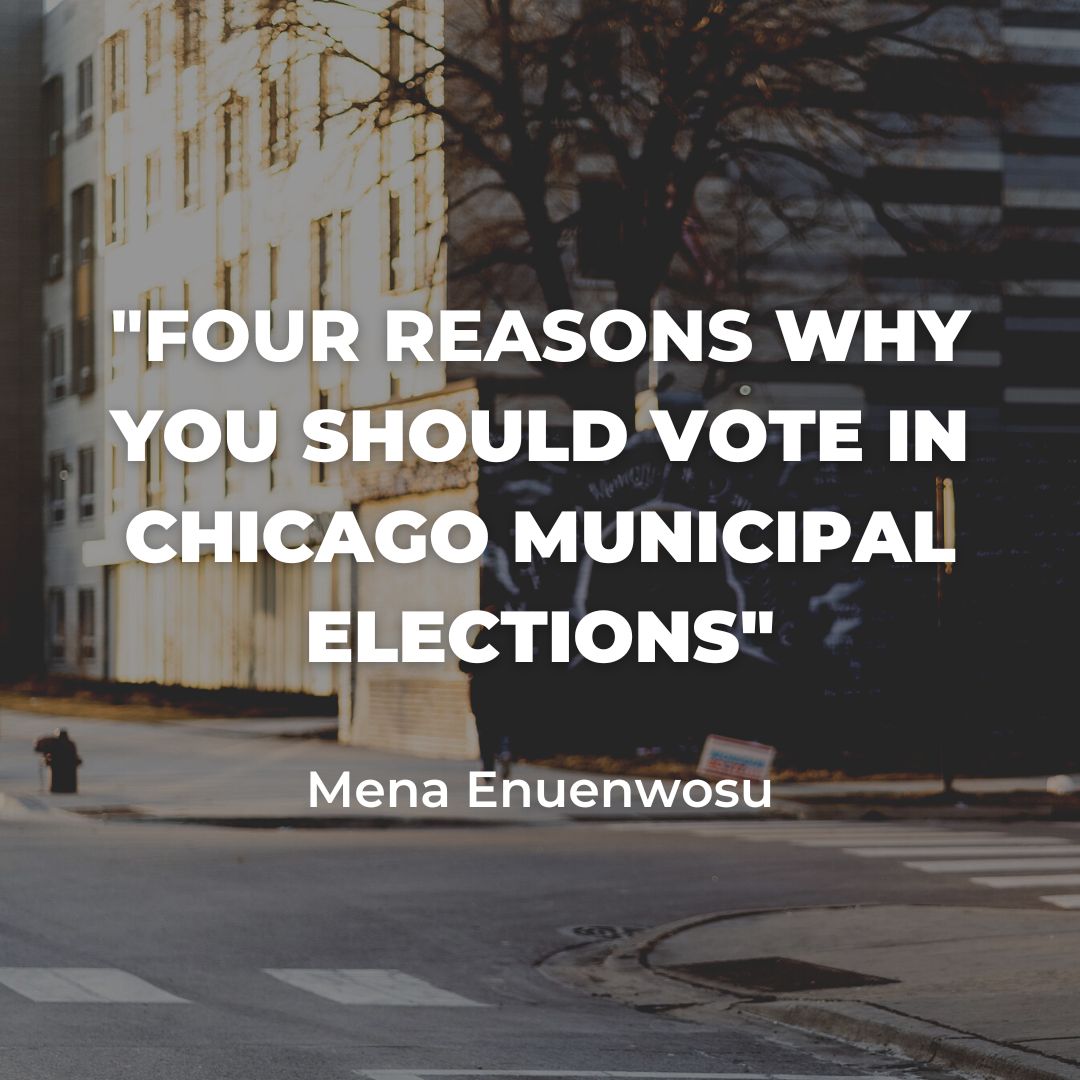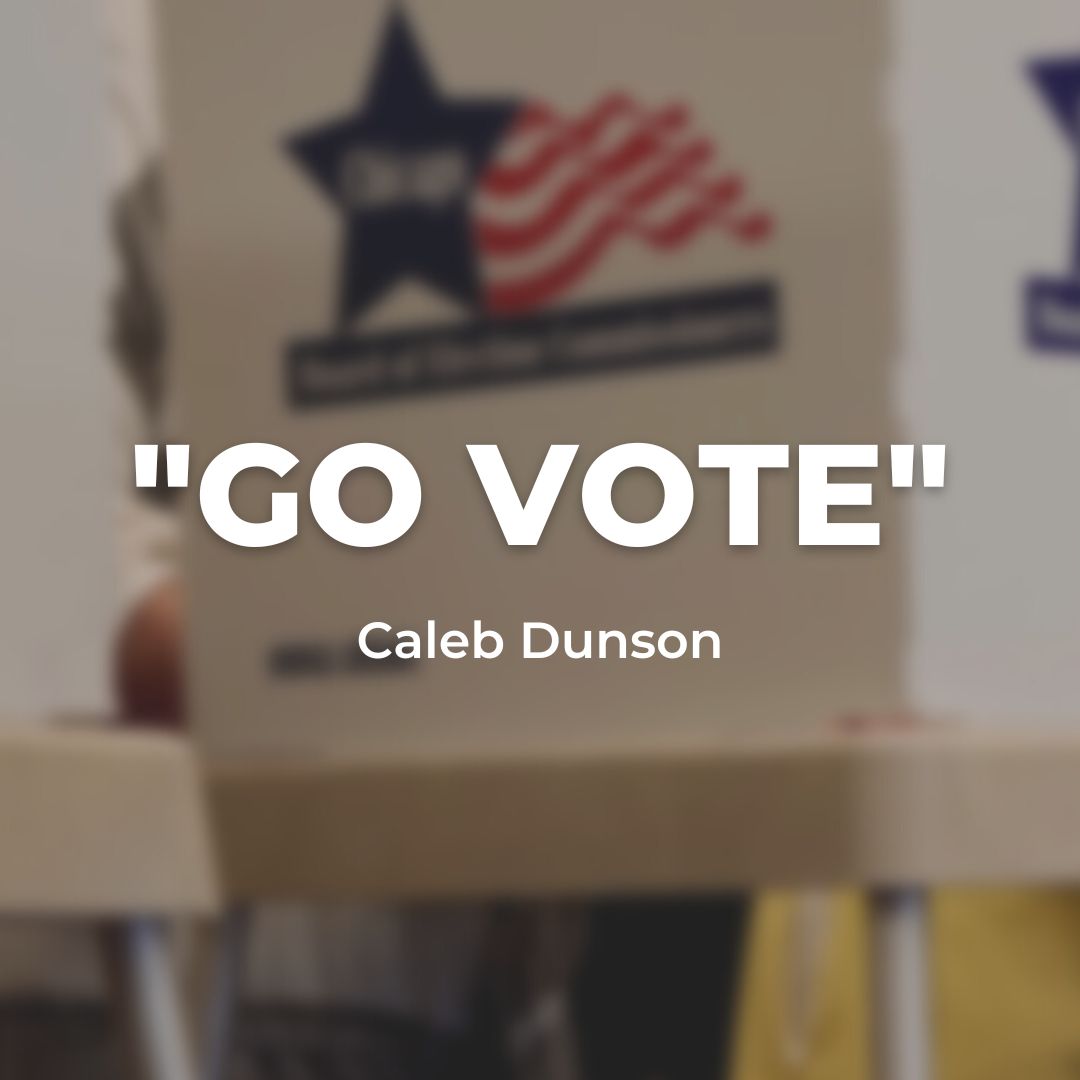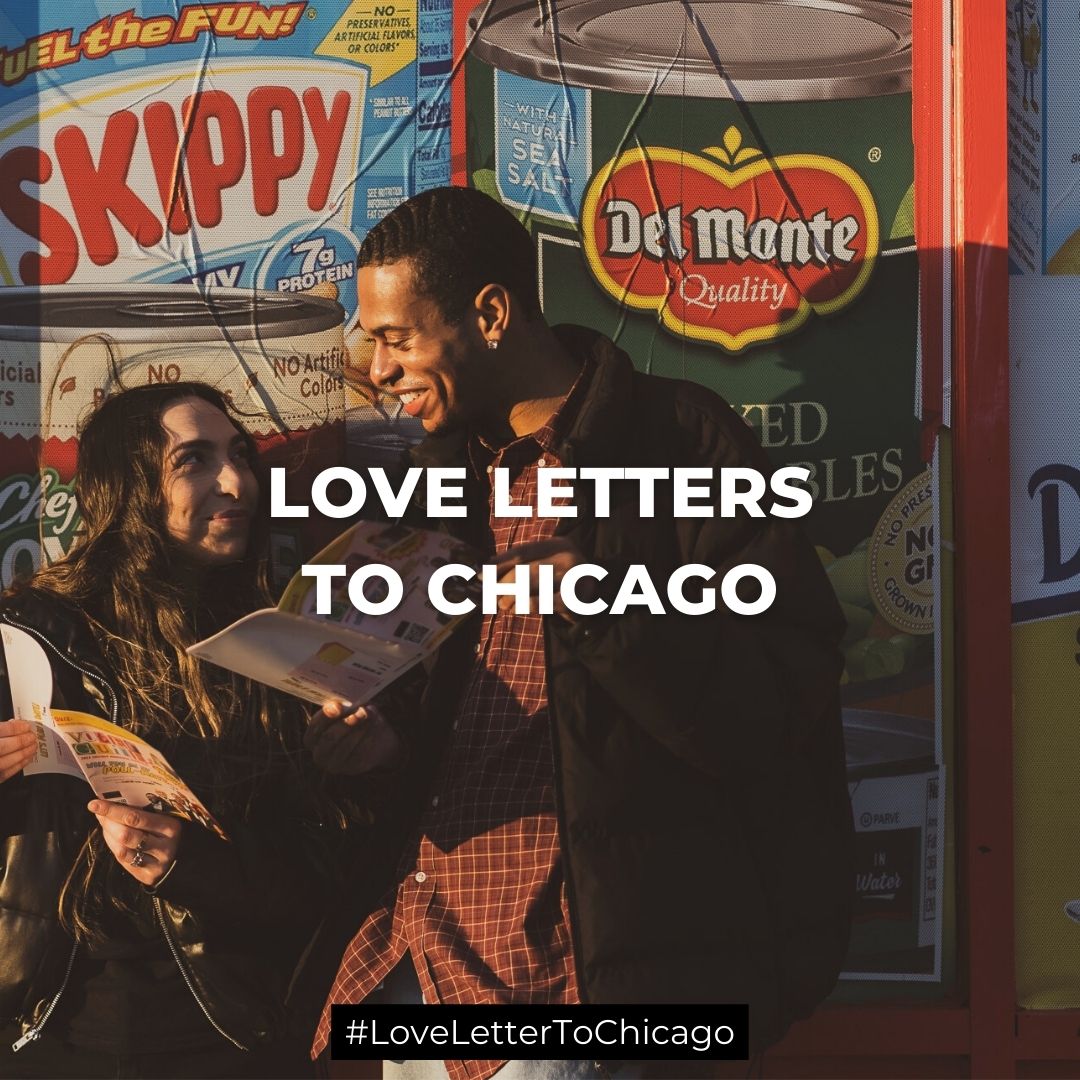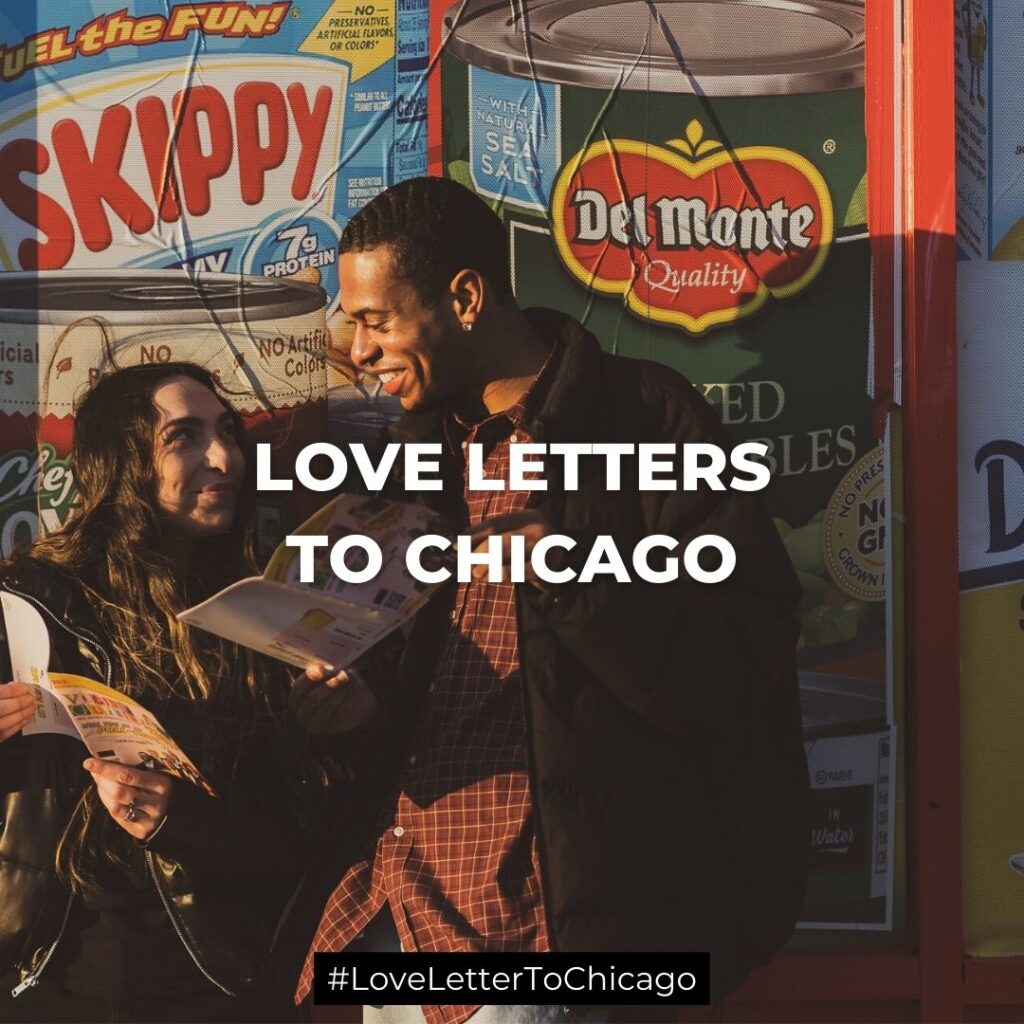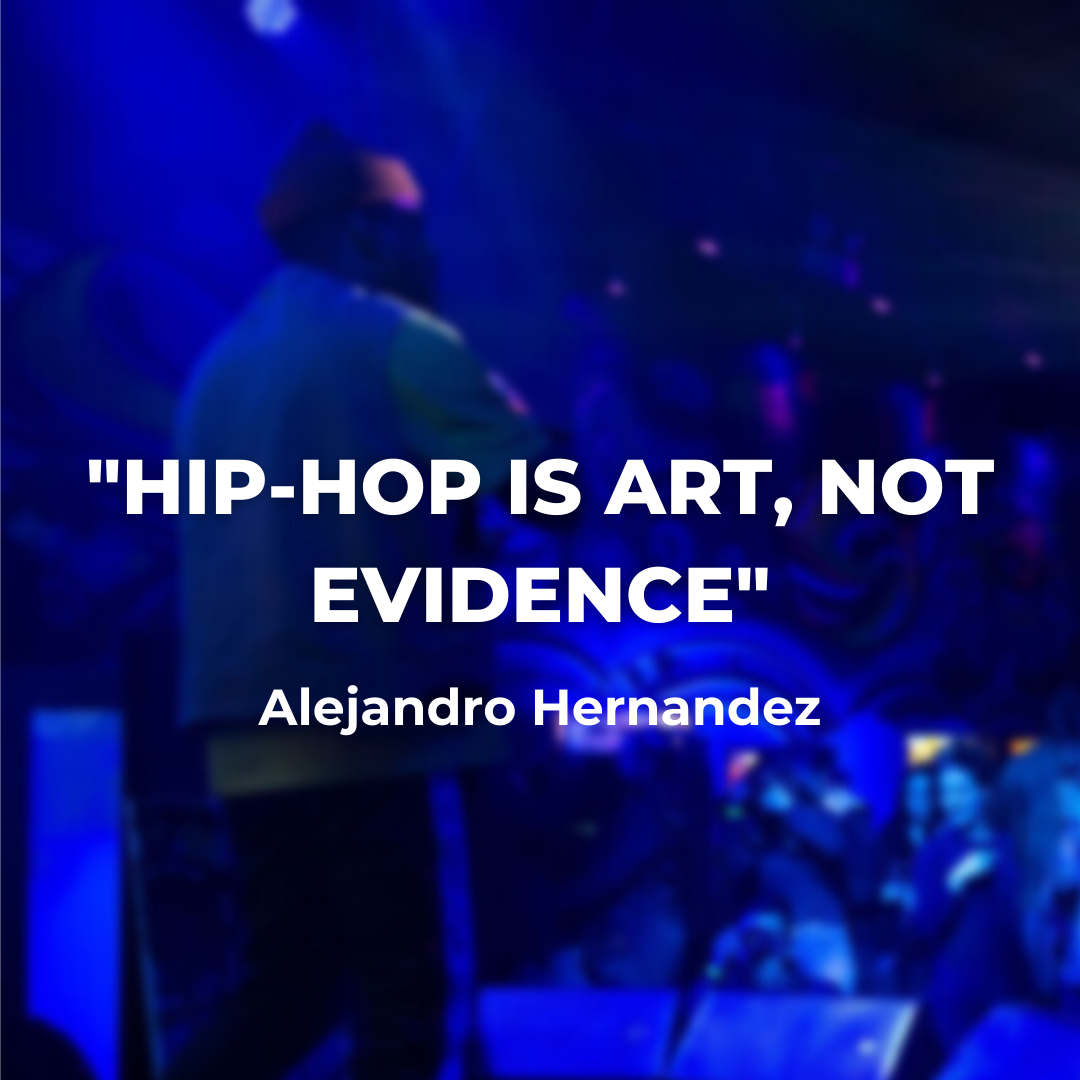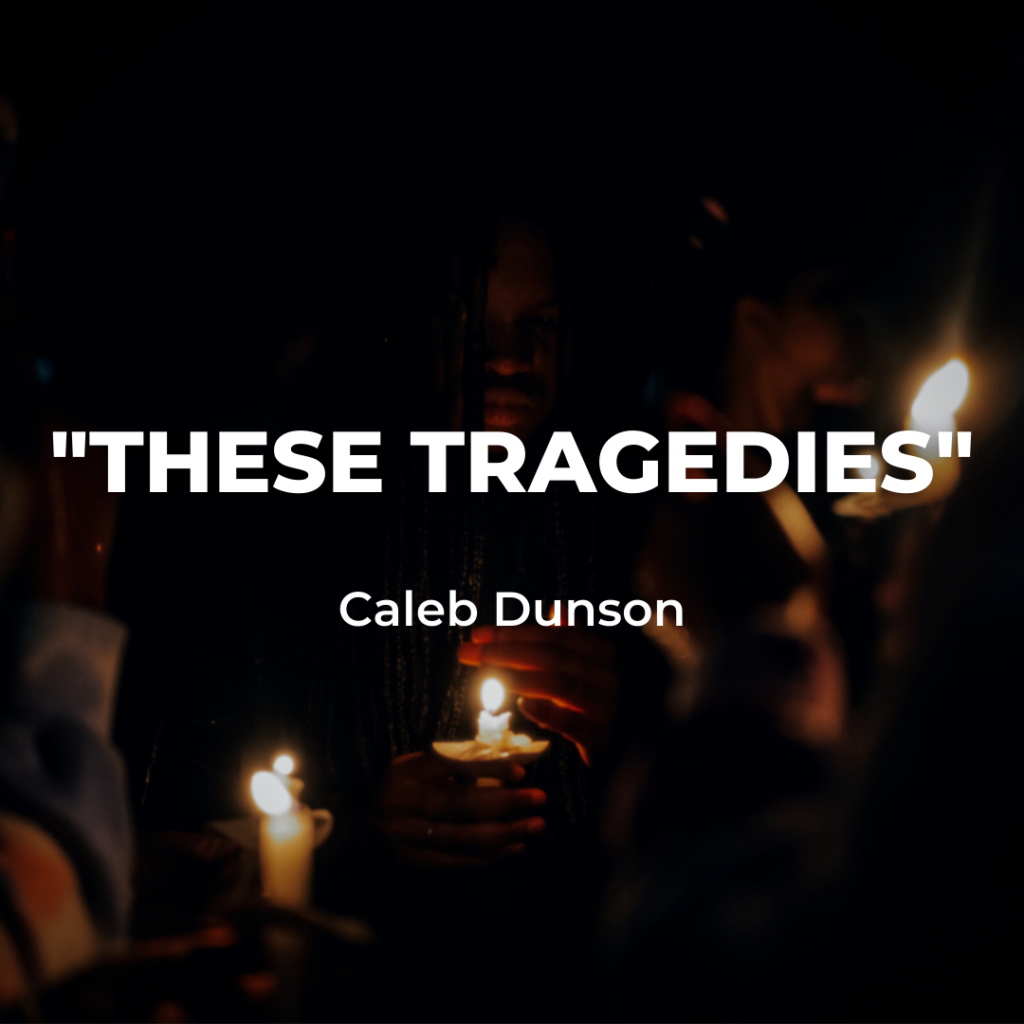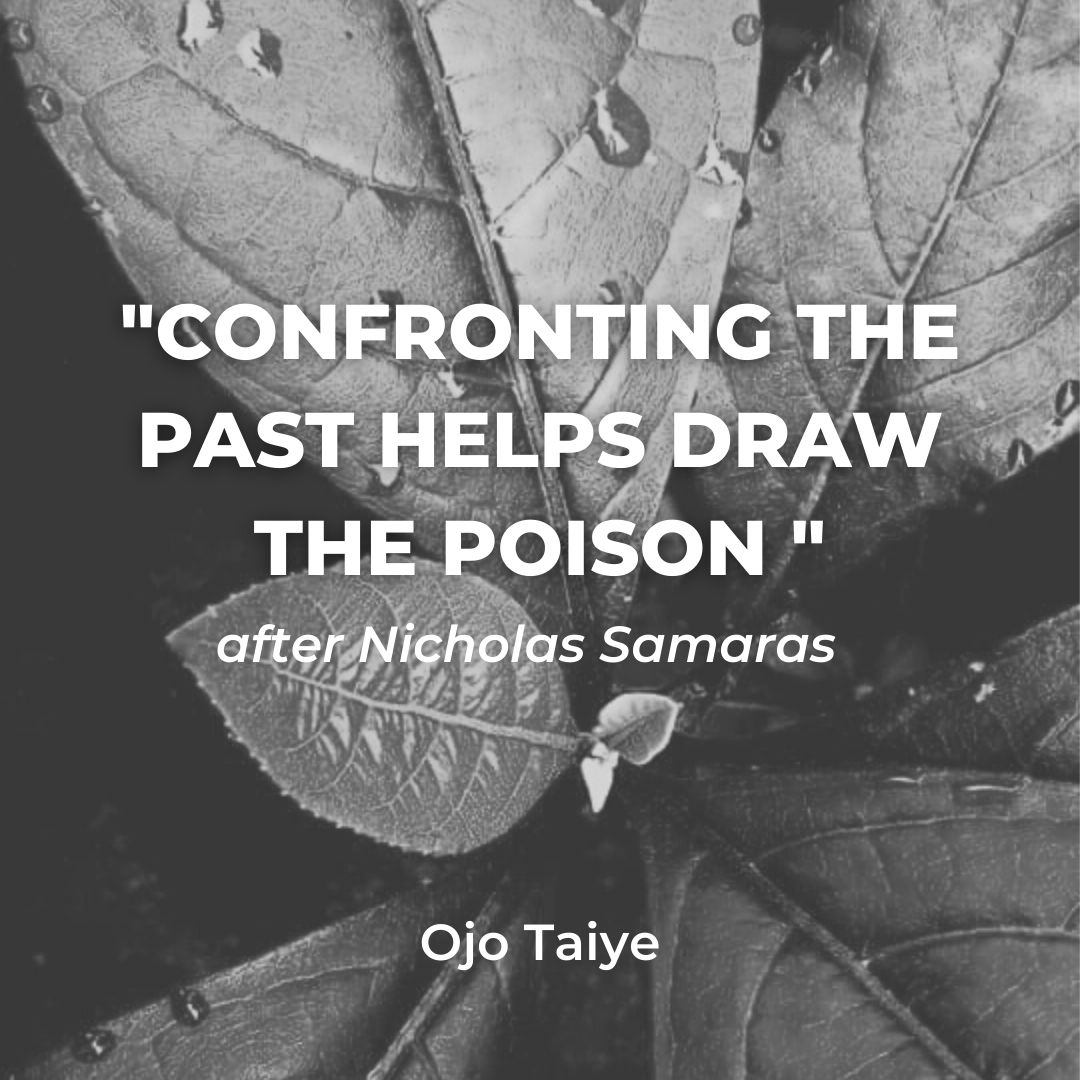By Mena Enuenwosu, Digital Organizing Fellow
A lot of people believe that the most important elections are the ones that elect the seat to the highest office in the nation; the presidential election held every four years. However, there are a set of elections that actually affect your day-to-day life a lot more–we call those municipal elections.
So what are municipal elections? Municipal elections are held to elect local governing officials. In Chicago’s case, this would be the Mayor, the City Clerk, the City Treasurer, Alderpeople from all 50 wards, and Police District Councils.
Here are four reasons why you should vote in the upcoming Chicago municipal elections.
- Local government offices and their decisions can, and will, affect your day-to-day life
Upset that 40% of Chicago’s budget goes to the police? Well, the mayor is responsible for creating the city budget.
Upset about how traffic caused by construction in your neighborhood has added an hour to your daily commute to work? You’ll need to talk to your alderperson.
Want to introduce a financial education program in Chicago Public schools? You should talk to the city treasurer!
Need a sticker for your car? You’ll be heading to the office of the city clerk.
Upset about the heightened police presence in your neighborhood? Police District Councils have a say in how police engage with the community.
Let’s break down the offices on the ballot. First up, let’s talk about the executive or the manager of the city–the mayor. The person elected Mayor of Chicago following Chicago’s 2023 municipal election, is in charge of the city’s daily operations. They have the power to appoint and dismiss key department heads–such as the Chief of the Chicago Police Department. The mayor is also responsible for presenting a yearly budget to the City Council. They have a huge say on what the city will spend its money on for the fiscal year. They should address the needs of the community: gentrification and housing, transportation, and parks and recreational areas, etc.
On top of that, Chicago is divided into 50 legislative districts or “wards”. Each district is represented by an alderperson, who is elected by citizens to serve a four-year term. Together, 50 aldermen from Chicago’s 50 districts make up the Chicago City Council, which serves as the legislative branch of the government of Chicago. Alderpeople vote on city ordinances, zoning changes, traffic control issues, mayoral appointees, and the budget.
Next up we have the treasurer. The treasurer is the city’s banker; they keep track of the city’s finances, managing all cash and investments for the City of Chicago, the four City employee pension funds, and the Chicago Teachers Pension Fund. The treasurer’s office also manages a number of programs that promote financial education and small business growth in Chicago’s neighborhoods.
The City Clerk is in charge of record-keeping for the city of Chicago and its elections. The position is central to government transparency because the clerk is responsible for keeping and making official records and legislation accessible to city residents. They also run the CityKey program-providing free government-issued ID card to Chicagoans regardless of age, gender, immigration status, or housing status.
Lastly, Police District Councils are a newer one! The newly created Police District Councils establish community oversight of the police. There are 22 police districts. Every four years during municipal elections, three community members will be elected to each of the 22 Police District Councils. Council members must live in their respective police district and cannot have been a member of the Chicago Police Department, Independent Police Review Authority, Civilian Office of Police Accountability (COPA), or the Police Board for at least three years before they assume office.
Council members are supposed to keep an eye on the police, hold monthly public meetings, work on the implementation of restorative justice practices, and build stronger relationships between police and community members.
With that in mind, it is clear all five of these offices have a very real impact on each of our day-to-day lives.
- When we don’t vote, decisions are made without our input.
Young people typically vote at lower rates than older people. There are a lot of reasons for this including lack of access to voting resources and civics education, and disillusionment with the current system. However, if we don’t vote, we are allowing other people to make very important decisions about our lives.
Our experience as young people is unique; we are coming of age during a pandemic, an increased awareness of racial injustice, and extreme climate change. We are also the youngest voting bloc, meaning we will be dealing with the repercussions of decisions for the most time.
When young people do not vote, other people get to decide the future we will live in.
- We are literally paying for the city.
Anyone who lives in Chicago pays taxes to the city. Buying a bottle of soda at 7/11? Paying the city. Got a parking ticket? Paying the city.
All of the taxes we pay go towards the city budget. The city budget is created by the mayor and voted on by city council or alderpeople. So, the people who are elected to office decide how to spend the money that comes from us–people in the city.
In 2012, Mayor Rahm Emmanual closed six of the city’s twelve mental health clinics, four of which were located on the South Side. Still, ten years later, the city only has six public mental health facilities. This is due to “lack of funding.” However, 40% of the entire city budget goes to the police department. If we vote people into office who share our values, we can create a city that doesn’t prioritize police, incarceration, and punitive responses over investing in healing and restorative spaces.
- You have the right to vote in Illinois
In Illinois, all citizens over age 18 who aren’t serving a conviction can vote. Still, that means community members without citizenship and those in prison are locked out of our democracy. When people aren’t viewed as constituents or voters, elected officials aren’t pressured to hear and address their needs. That is why it is important we fight for a democracy that includes all of us.
In the meantime, though, it is our responsibility to vote for people who will create a future where all people are valued and included.
